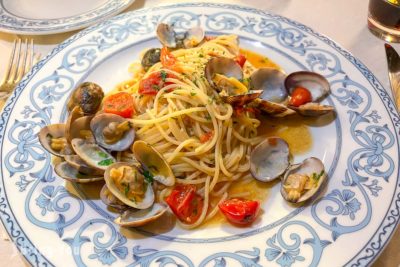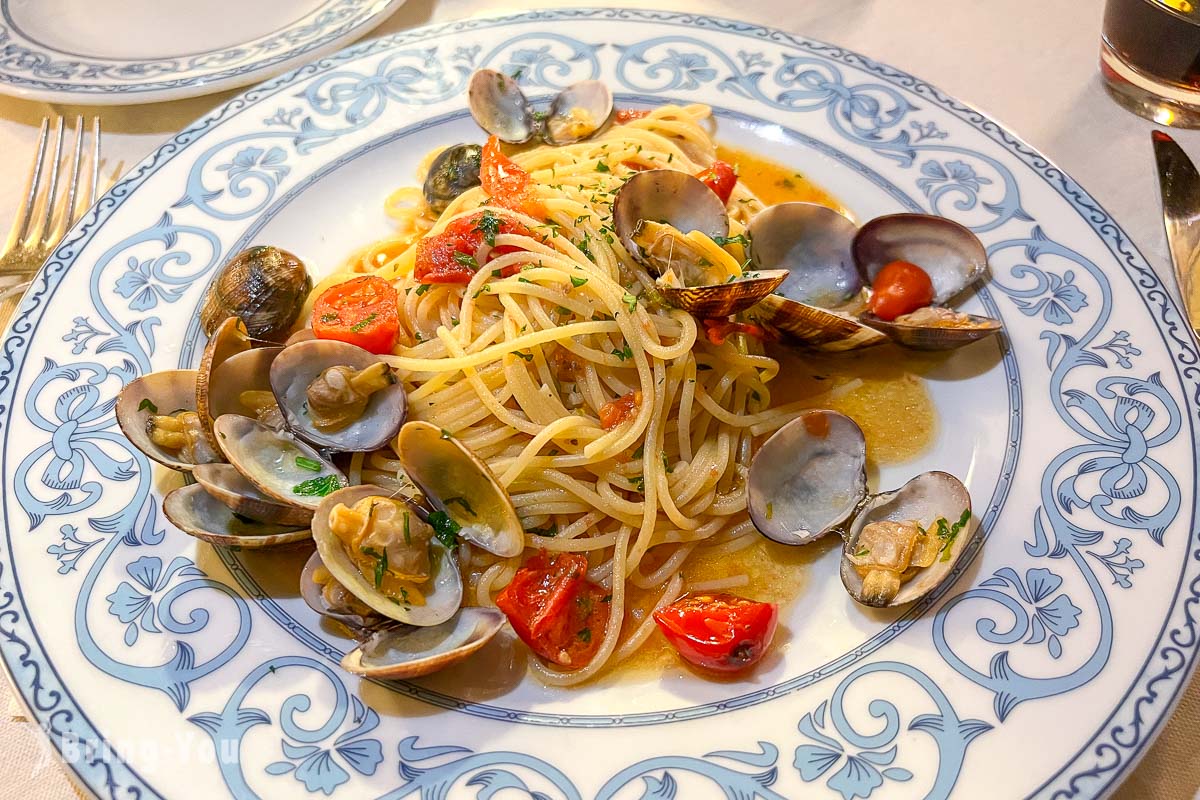
In this Italian food guide, you’ll never limit yourself to only pasta, pizzas, and gelato anymore!
These are some of the most common dishes that introduced me to Italian cuisine but the locals have so much more to offer that completely changed my definition of Italian food.
I agree that the tasting profile is a bit bland – but it’s not even close to boring.
Cultural exchange has modified quite a lot of traditional recipes. For instance, Alfredo sauce, though taking root in Italy, was added with cream to make it cheaper and more filling when it departed foreign. But we won’t waste too much time on this topic.
In this article, I’ll be sharing my favorite Italian food that complements simplicity and top-notch ingredients. I’ll walk you through the different regions of Italy so you can have a glance at the origins, including Northern Italian, Tuscan, Roman, and Neapolitan cuisines. Let’s dive right in!
Northern Italian Cuisine
From Liguria to Piemonte, from Lombardy to Friuli-Venice Giulia, Northern Italian cuisine is centered around dairy products. The rolling hills where cattle roam free in the shadow of the Alps allow dairy farming to become the biggest hook. For that reason, Northern Italian gastronomy concentrates on cheese, milk, butter, rice, and corn.
Cotoletta alla Milanese (Veal Milanese) & Ossobucco alla Milanese (Veal Shank)
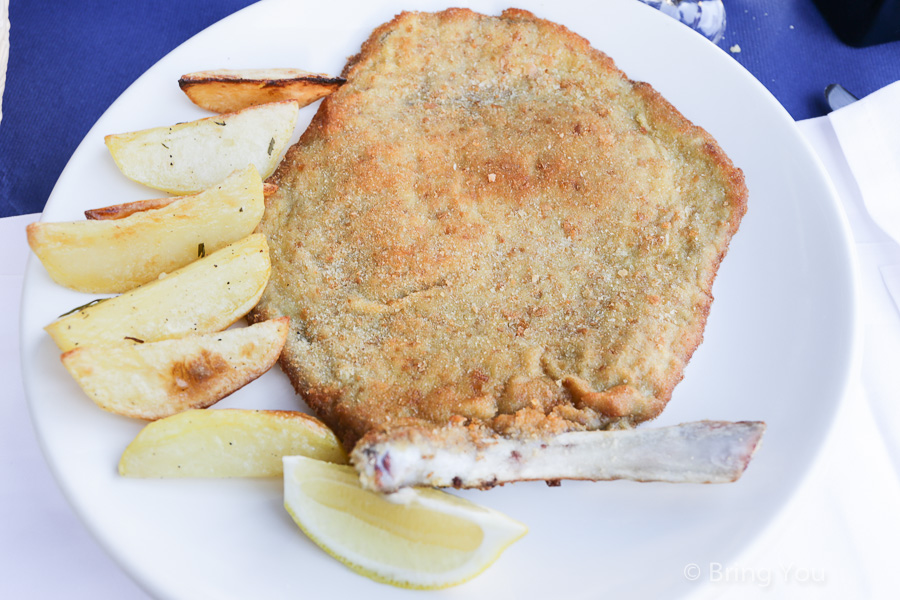
Cotoletta alla Milanese, or Milanese veal cutlet, is a traditional Italian staple taking root in Lombardy. Best served as a main course, this hearty meat-based dish has veal cutlet as the star of the show. Carefully pounded and soaked in breadcrumbs before being fried to perfection in butter, Cotoletta alla Milanese will remind you of the Austrian Wiener schnitzel though this one is fried in lard.
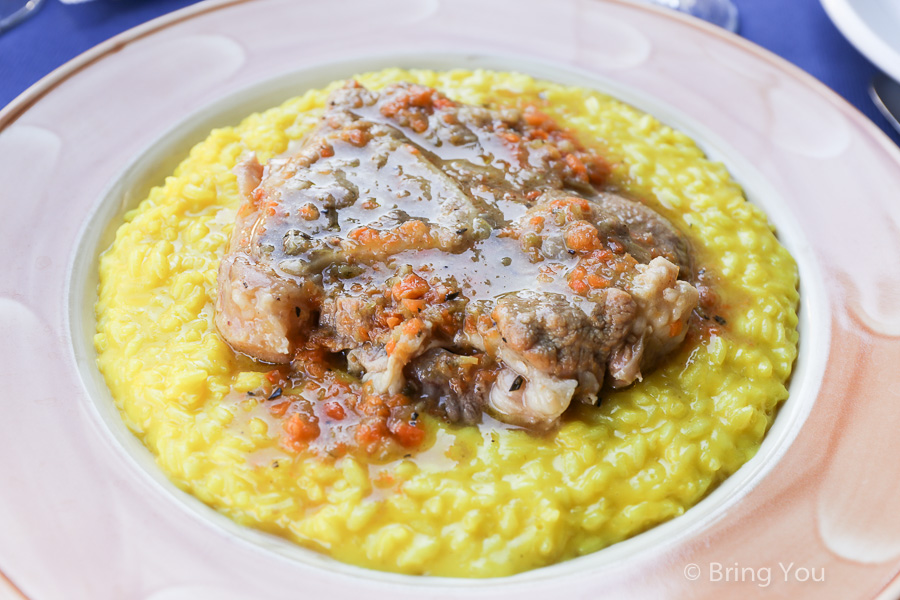
A close cousin to Cotoletta alla Milanese is Ossobuco alla Milanese. A serving of alla Milanese consists of veal shanks braised with ripe tomatoes, carrots, and celery. When served, they top it up with gremolata which is made of parsley, lemon zest, and garlic to balance out the richness of the meat.
Where to find?
Bellariva Milan: a trusted restaurant down the bank of the enchanting Navigli Canals. Their Ossobucco is summer on the plate, with stunning saffron-based stewed rice complemented by the creaminess of butter.
Spaghetti Al Nero Di Seppia (Cuttlefish Black Pasta)
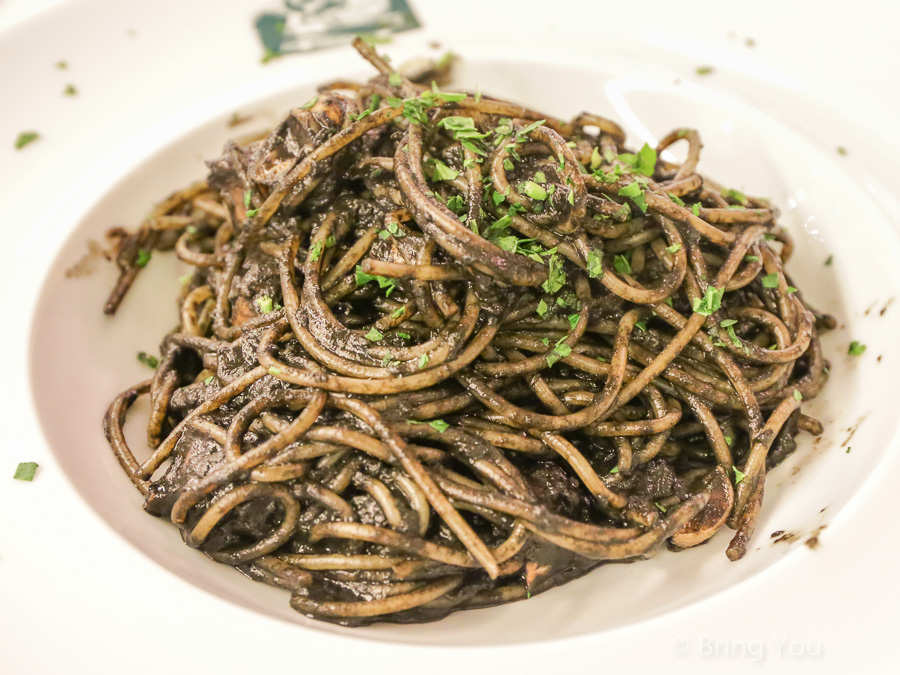
Treat your eye to the unique appearance of Sicilian Black Pasta and delight your taste buds with the tantalizing profile of the ocean. Spaghetti Al Nero Di Seppia gets its dramatic color from cuttlefish ink. It’s served with freshly caught cuttlefish from the sea and sprinkled with garlic and parsley. White wine sits in the background to bring out its decadent flavor.
Where to find?
Trattoria Da Romano Burano Venice: a heritage family-run business with a well-lit dining interior where cuttlefish creates a stunning deep-black color for the pasta. The creamed cod sitting on top is a delightful touch to cap it off.
Tuscan Cuisine
Locally referred to as the peasant’s recipes, Tuscan dishes are all about using meat as the game-changer with hearty sauce and simple ingredients.
Bistecca alla Fiorentina (Florence T-Bone Steak)
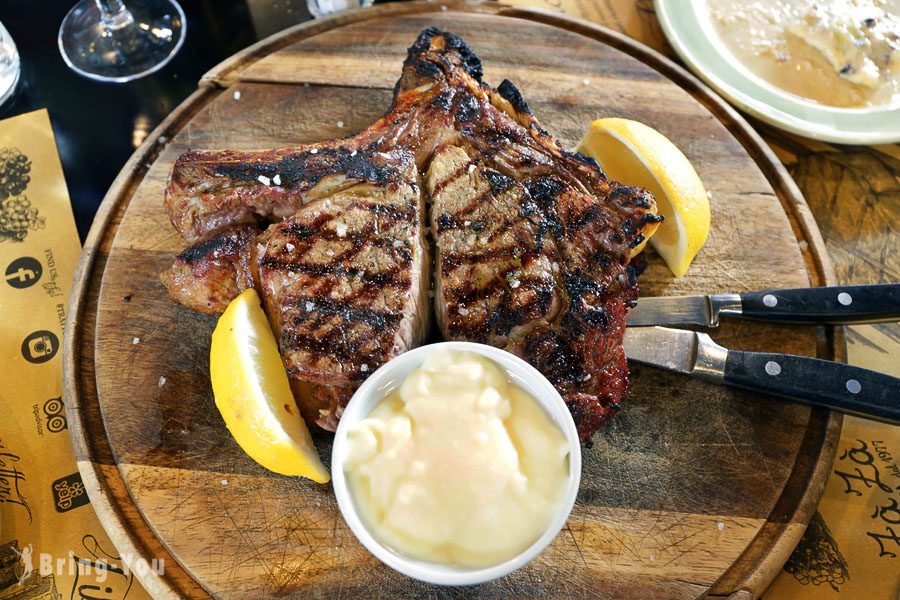
Without a doubt, Bistecca alla Fiorentina is one of the most talked-about meat dishes in Italy. Taking root and made popular in Florence, Bistecca alla Fiorentina is mostly made with a cut of Chianina loin that has a T-shaped bone in the middle. The secret to Florence T-Bone Steak lies in the skin which is fried until it is slightly crispy before they throw the steak on top of a charcoal fire to lock in the gravy.
Where to find?
Trattoria Zà Zà Florence: Bright and airy, this spacious dining house dishes up succulent steaks that weigh up to 1.3 kilograms.
Panini con Lampredotto (Bread Roll Sandwiches)
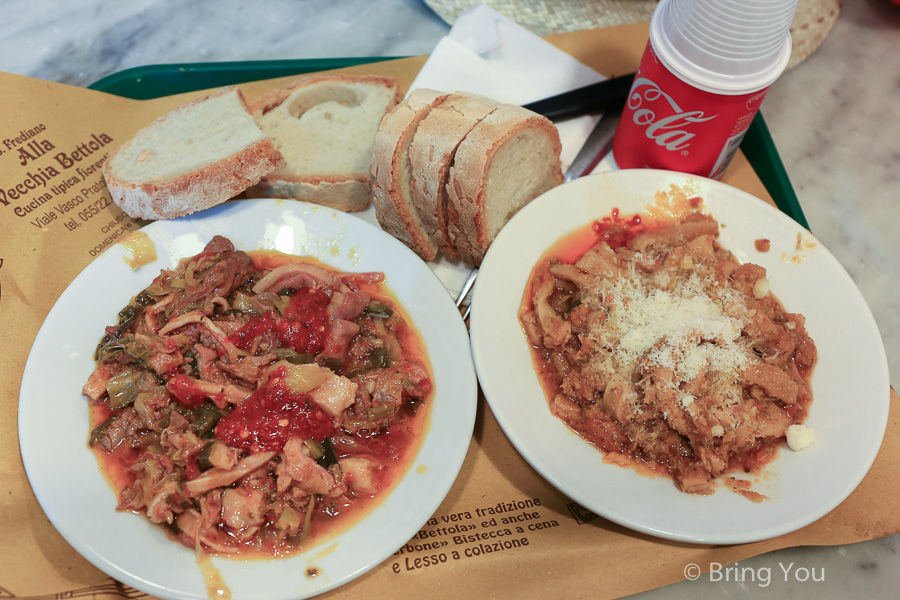
One of the most popular street foods in Florence, Panini con Lampredotto is prepared in a quick manner using locally sourced ingredients to provide a handy meal for people on the go.
As the name suggests, Lampredotto refers to the fourth stomach of the cow which is known as the abomasum. It is then boiled until tender with onion, celery, and tomato broth. When sandwiched between the bread rolls, they top it off with a spoonful of Italian salsa verde herb sauce.
Where to find?
Da Nerbone Florence: a local market stand on the ground floor of Mercato Centrale serving Panini con Lampredotto, marinated pork sandwich, tripe and tomato stew, and many more. Tables are available but filled up fast.
Pappardelle al Ragù di Cinghiale (Ribbon Pasta With Wild Boar Sauce)
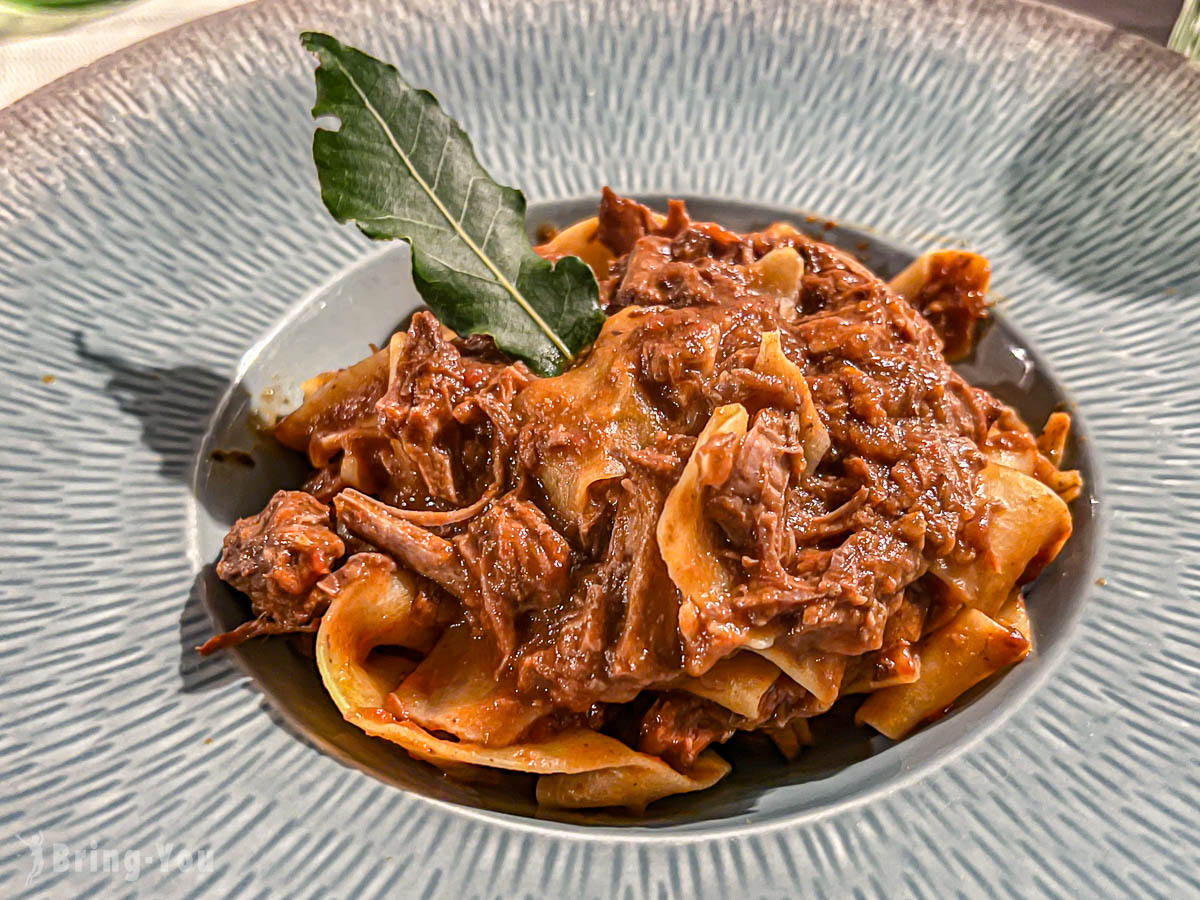
This heavenly-made pasta is the most famous Italian dish served with wild boar. Pappardelle al Ragu di Cinghiale stands out from other types of ragù thanks to the use of wild boar that lends an intense flavor to the tasting profile. On top of that, the long-simmered sauce made of tomatoes and red wine makes it even harder for the palate to resist.
Where to find?
Osteria Vecchio Cancello Florence: a homey and elegant house with a perfect wild boar that melts in your mouth.
Roman Cuisine
The secret to Roman food is promoting humble ingredients by using gastronomic art. Though originating as the food of the lower class, Roman cuisine today has magically transformed, most known through rich pasta, decadent stews, and traditional offal as well as locally sourced veggies.
Truffle
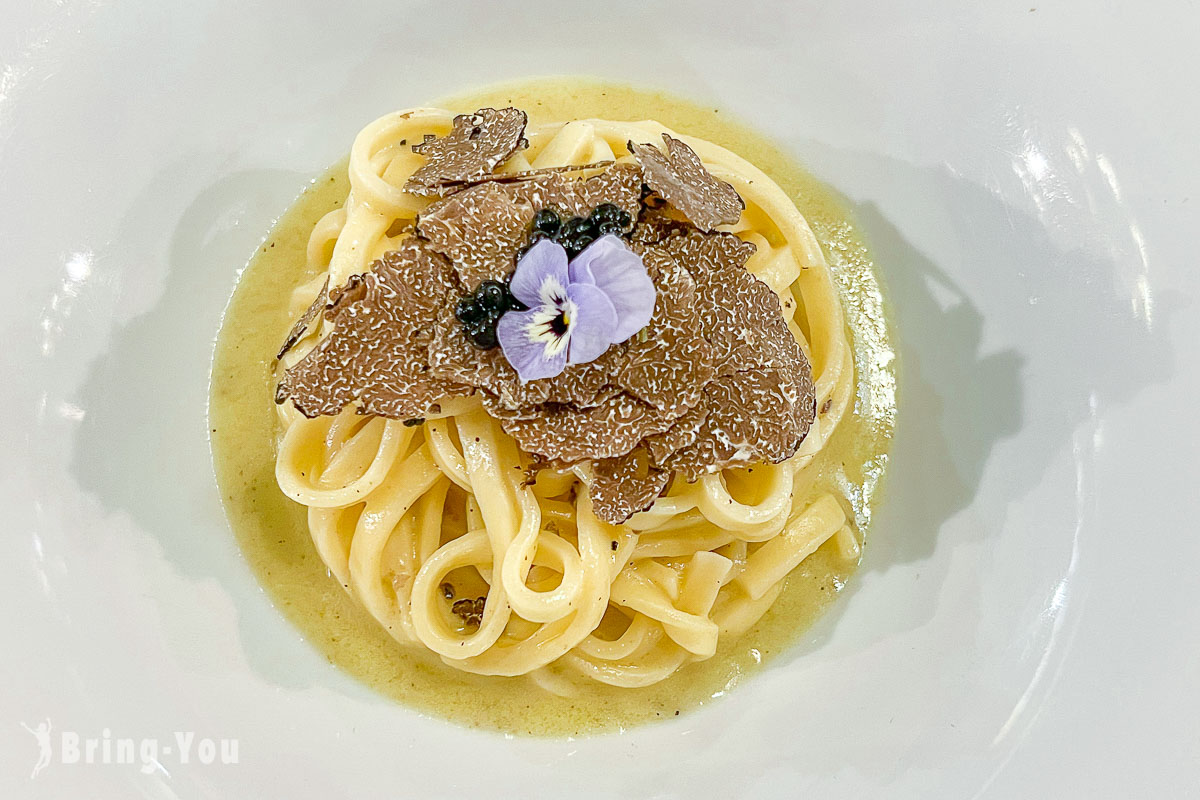
When November is around the corner, the truffle season officially starts. Italian truffles take pride as one of the most expensive truffles all over the world and can only be found in certain parts of Rome and Croatia. When ripe, Italian truffle is not crazy expensive, allowing you to enjoy a world-class dish without breaking the bank.
Where to find?
Osteria Barberini Rome: a cozy yet classic bistro where black and white truffles in season draw crowds.
Trippa alla Romana (Roman Tripe)
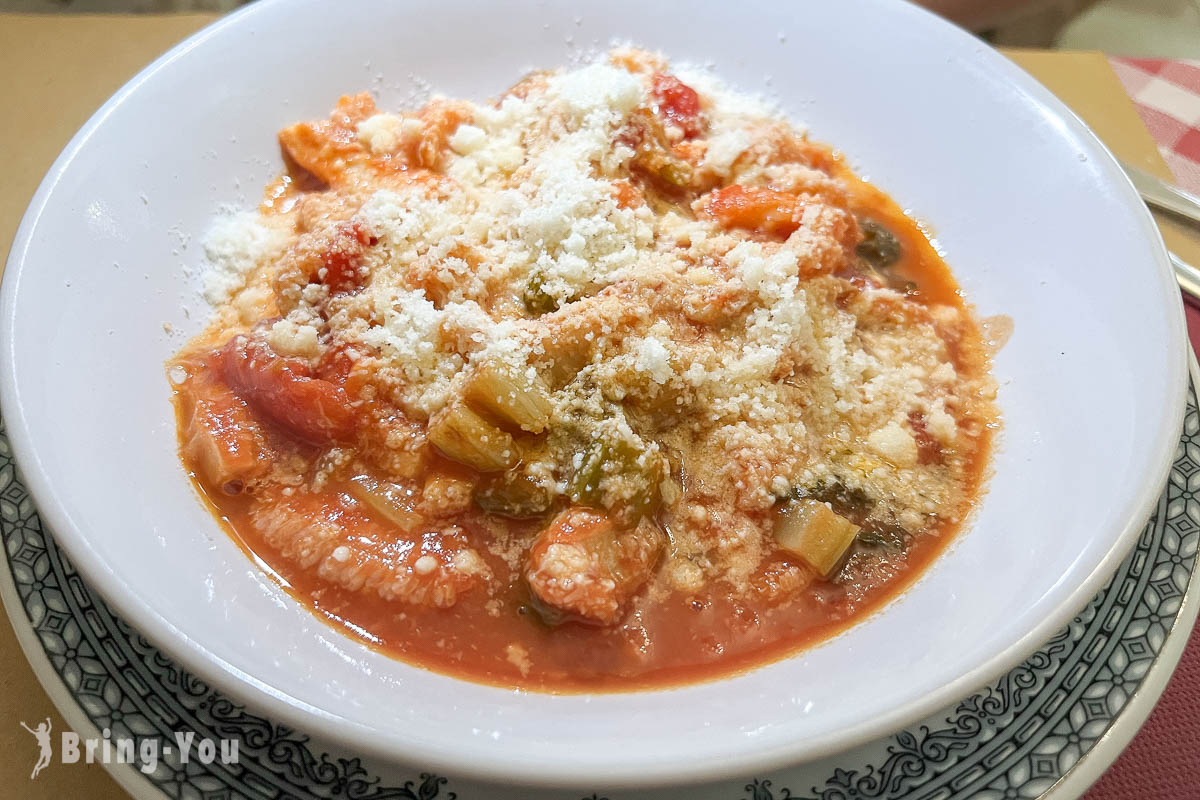
Starting as a wartime staple, Trippa alla Romana uses offal as the main ingredient, cooked with white wine and stir-fried vegetables until the sauce evaporates. When served, tomato sauce is added to bring out its full potential and drizzle with pecorino and mint before serving meals.
Where to find?
Non c’è trippa pe’ gatti Rome: a cozy and casual dining hole serving classic Roman and Napoli cuisines.
Supplì (Fried Rice Balls)
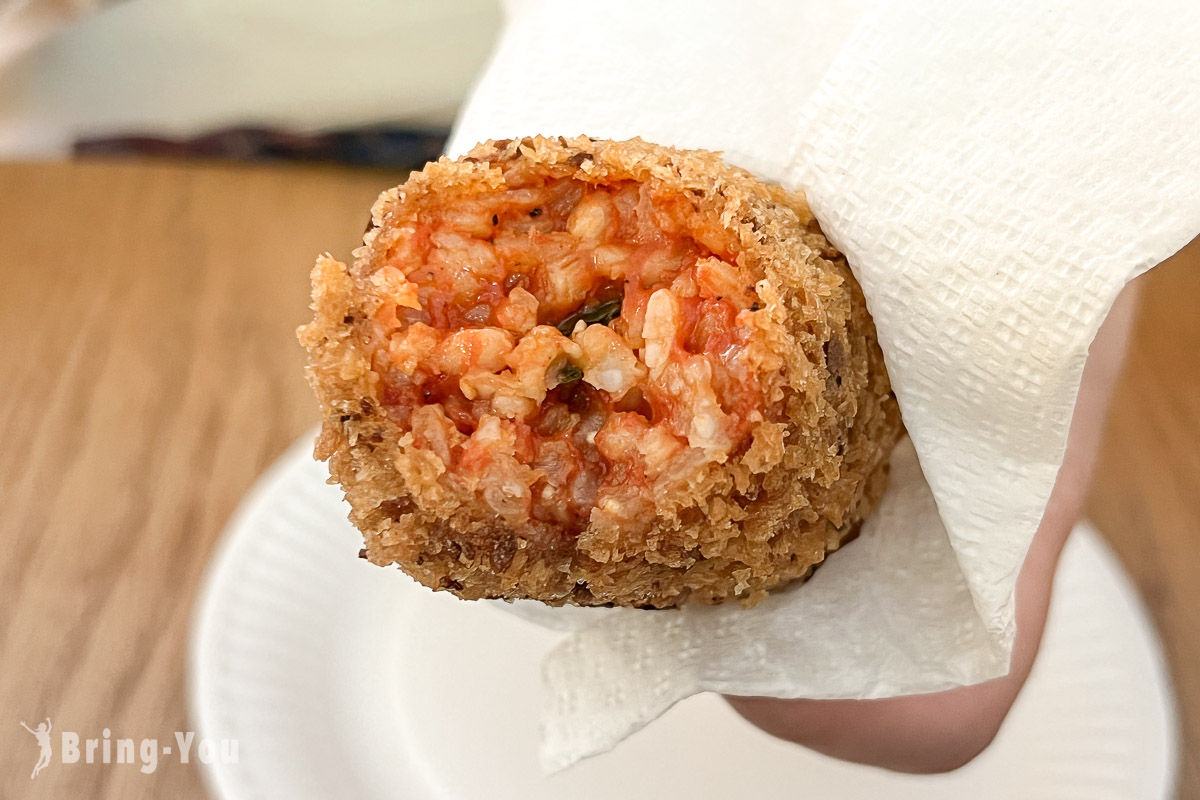
Quick and easy, supplì is like small croquettes stuffed with rice, beef, and mozzarella cheese string before being fried to golden and crunchy.
Where to find?
La Prezzemolina Rome: fantastic cheese-filled rice balls are dished up along with pizzas, salads, and sandwiches.
Neapolitan Cuisine
Napoli Pizza
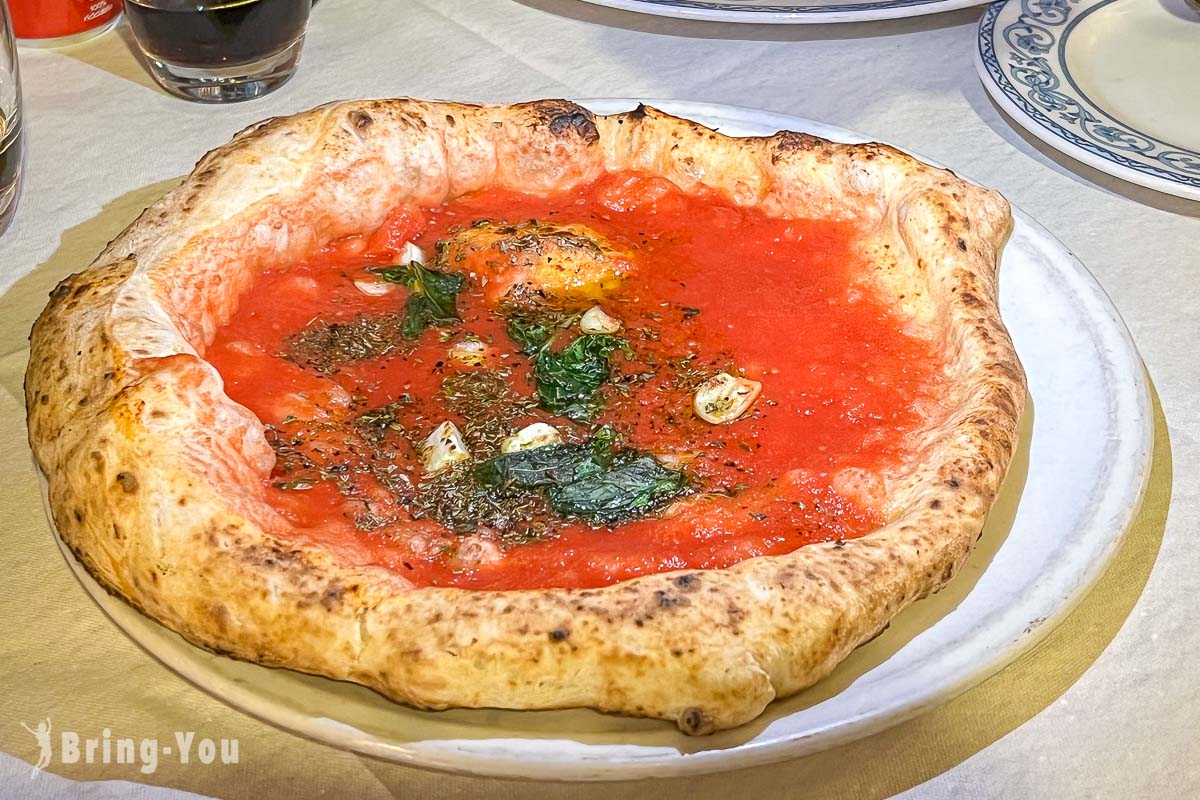
Napoli Pizza is undoubtedly the most well-known Neapolitan food. Unlike Roman pizzas, Napoli pizzas make a statement thanks to its loose and thick crust. Napoli pizzas are widely served in Naples with a soft and elastic dough.
Where to find?
Pizzeria Brandi Naples: a long-standing dining hole at the back of an alley. Reservations here are highly recommended.
Babà (Syrupy Sponge Cake)
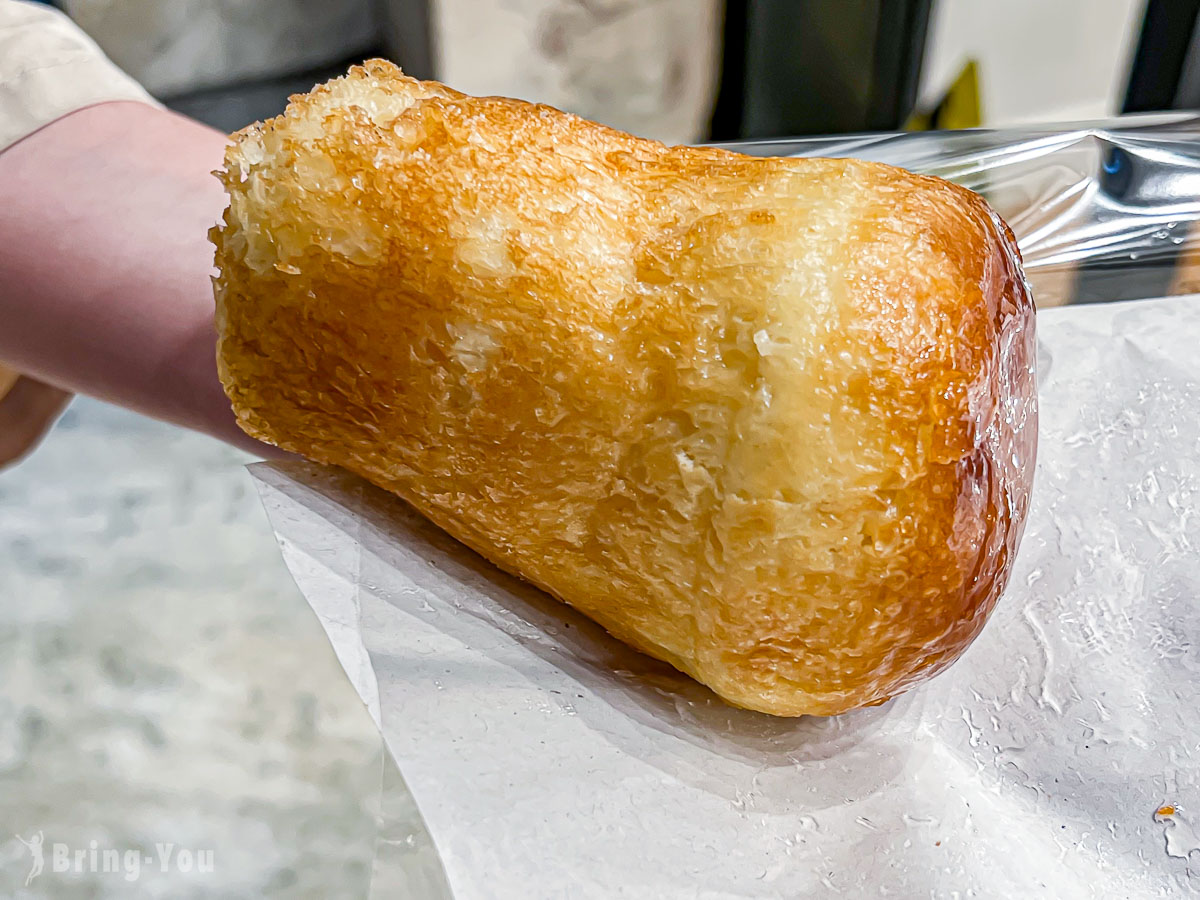
Cap off a filling meal with this famous finger dessert. Babà is a yeasted Neapolitan rum cake with a citrusy note. Some people served it with apricot jam to round off the sticky finish.
Where to find?
Mary’s Sfogliatella Naples: their fresh-off-the-stove Babà topped with cream is an ecstasy for the palate and sight.
Take my list above as your getaway to Italian cuisine. And whenever you’re in doubt, try my recommended restaurant and your day is complete!
